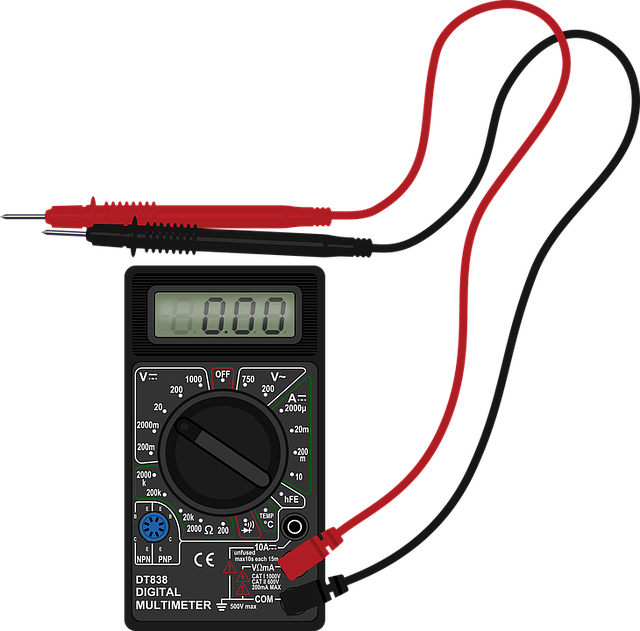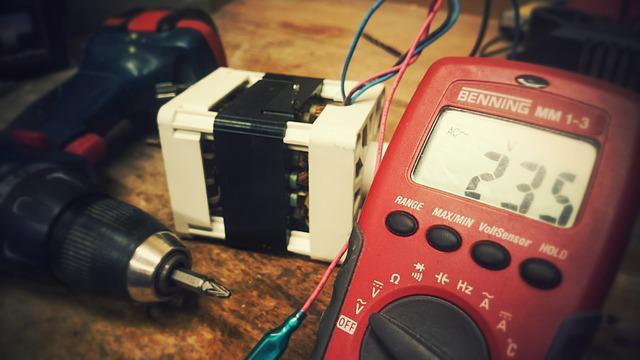Failure in the ignition system can be because of several factors. And spark plugs can be one of them. In fact, a major reason. But how do you know for sure whether the spark plug has gone bad or not?
How to test the spark plug? To test a spark plug, take a multimeter and check:
- The resistance between the terminal and the tip of the center electrode
- The resistance between the center electrode terminal and the ground electrode
The resistance between the terminal and the tip of the center electrode should be almost zero for non-resistor spark plugs, and between 4000-6000 ohms for resistor spark plugs.
And, the resistance between the center electrode terminal and the ground electrode should be absolutely nil for a good spark plug.
Now that we know the basics, let’s dig in deeper.
Tools required
Tools required for testing the spark plug are limited. All you need is a multimeter. That’s it. That’s all you need to check the spark plug condition.
If the spark plug tip is covered with deposits, you will also need a wire brush to clean the deposits. Deposits can come in different types and forms. You can check out our post on how to read spark plugs based on the type of deposits.
So, the tools required for testing the spark plug include:
- Spark plug
- Multimeter
- Wire brush
Center and Side electrodes
A spark plug has two electrodes – the center electrode and the ground electrode.
The center electrode is where the high-voltage electricity passes to generate the spark. The ground electrode acts as the grounding for the high-volt electricity in the spark plug.
Both these spark plug electrodes are separated by an insulator. This is an important thing to note. The center and the ground electrode should be completely separated and isolated by the insulator.
For a spark plug to be in good condition, these are the two characteristics it should have:
- Smooth flow of high voltage current in the center electrode (from terminal to tip).
- Separation of the center and the ground electrode by the insulator.
If any of the above two conditions are not met, then the spark plug is damaged.
Testing the spark plug
The testing of the spark plugs is to check if they are still good or if they need to be replaced.
A spark plug always has a number on it. If the spark plug model number has an ‘R’ in it, that means there is a resistor in the spark plug. These are called resistor spark plugs.
On the other hand, if there is no resistor in the spark plug, they are called non-resistor spark plugs. The model number of these non-resistor plugs will NOT have an ‘R’ in them.
Here is our post detailing the differences between a resistor and a non-resistor spark plug.
Now that’s fine, but what are we testing in the spark plug?
We would test the spark plug for two things:
- Center electrode conductivity from terminal to tip
- Conductivity between the two electrodes
The first test is to check the conductivity between the terminal and the center electrode tip. If the conductivity is too low (i.e., high resistance) then the spark plug is blown and needs to be replaced.
The high-voltage electricity flows from the terminal to the center electrode tip. So, you want good conductivity to ensure that the tip receives this high-voltage electric current to generate a strong spark for ignition.
Without good conductivity, the tip will not receive a high-voltage current. This will result in a poor spark or even no spark at all from the center electrode.
That’s why a high conductivity is important between the center electrode terminal and the tip.
The second test is to check the conductivity between the center electrode and the ground electrode. The resistance here should be absolute zero.
If not, there is an electric leakage between the two electrodes. Which translates to a failed insulator.
The ceramic insulator is supposed to separate the two electrodes and insulate them from each other. If there is a current flow between the electrodes, the spark plug has a damaged insulator and is no longer fit for usage.
Now that we know the theory, let’s get into how you should test and how to decide whether the spark plug is good or not.
Test #1: Center electrode conductivity from terminal to tip
The Center electrode is a single connected metal piece starting from the terminal and going all the way to the tip. The high voltage electricity is passed from the terminal to the tip.
We need to measure the resistance between this terminal and the tip. If the resistance is too high, then the conductivity is too low across the center electrode. Hence, the tip will not generate a strong enough spark for ignition.
Here are the steps you need to follow to check the resistance.
Steps:
- Set up the multimeter. We are checking the resistance between the spark plug terminal and the center electrode tip. So, set the multimeter to the ohm setting (symbolized as Ω).

- Next, place the spark plug on a non-conducting surface and check the tip. If there are carbon deposits on the tip, clean it using a wire brush.
- Once cleaned, we can now measure the resistance. Take the multimeter leads and place each metal head of the leads – one on the terminal and the other on the center electrode tip.
- Check the multimeter reading of the resistance.
For non-resistance spark plugs, the resistance reading should be almost zero.
For resistance spark plugs, the resistance reading typically will be between 4000 ohms to 6000 ohms. - If the resistance reading for the non-resistor spark plug is significantly higher than zero, the spark plug is blown and needs to be replaced.
- Similarly, if the resistance reading for the resistor spark plug is more than 10,000 ohms, the spark plug is blown and needs to be replaced.
Test #2: Conductivity between the two electrodes
The second test is to ensure that there is no electric current leakage from the center electrode to the ground electrode. If this happens, the spark plug is of no use to use.
The leakage can happen if the insulator has breakage or is damaged.
Now, all we need to do is check the resistance between the center electrode terminal and the ground electrode. The resistance should be nil. If not, throw that spark plug away, please.
Steps:
- The first step is to set up the multimeter. This should have been already done for the first test. So there is no need for any further changes. Make sure the reading is set to ohm (Ω) since we measuring the resistance here.
- Next, take the leads and place one lead on the terminal. This is the center electrode from which we are measuring the resistance across the ground electrode.
- The second lead should be on the threads. The thread is part of the ground electrode. Check the multimeter reading. It should not move an inch and must show the reading as nil.
- If the resistance reading is not nil, then you must discard the spark plug. It is of no good use. Also, if the resistance is indeed showing nil, try to move the lead on the thread across the ground electrode. This is to ensure that there is no leakage at all.
Do’s and Dont’s
- Lay down the spark plug on a non-conductive (insulated) surface while testing.
- Do not touch the metal parts of the multimeter leads. make sure you are holding the insulated parts – which would typically be in red and black colors.
- Check the multimeter settings. The reading should be set for ohm. Typically in Kilo ohms.
- Make sure the reading is between metal to metal. If there are carbon deposits on the spark plug tip, clean the spark plug with the wire brush.
Conclusion
To check whether the spark plug is good or not, we conduct two tests:
- Check the resistance between the center electrode terminal and the tip.
- Check the resistance between the center electrode terminal and the ground electrode.
These are the characteristics to differentiate a good spark plug from a damaged spark plug from the tests.
| Test | Good spark plug | Damaged spark plug |
|---|---|---|
| Resistance between terminal and tip (center electrode) | i) Almost zero for non-resistor spark plugs ii) 4000-6000 ohms for resistor spark plugs | i) Far higher than zero for non-resistor spark plugs ii) Greater than 10,000 ohms for resistor spark plugs |
| Resistance between terminal and ground electrode | Nil | Greater than zero |
